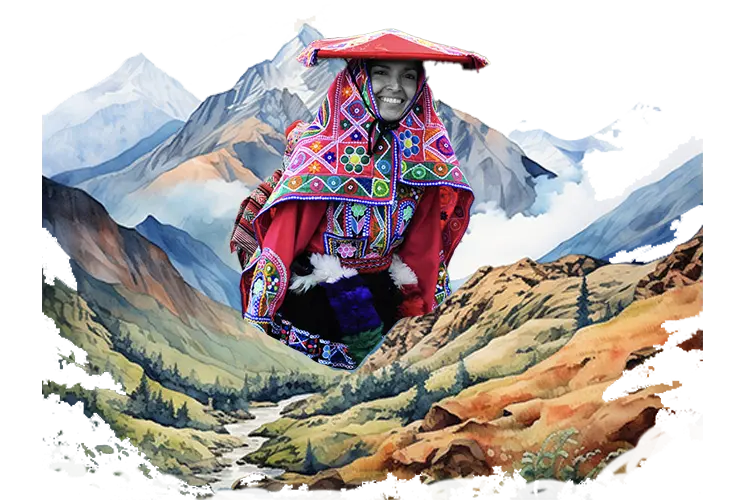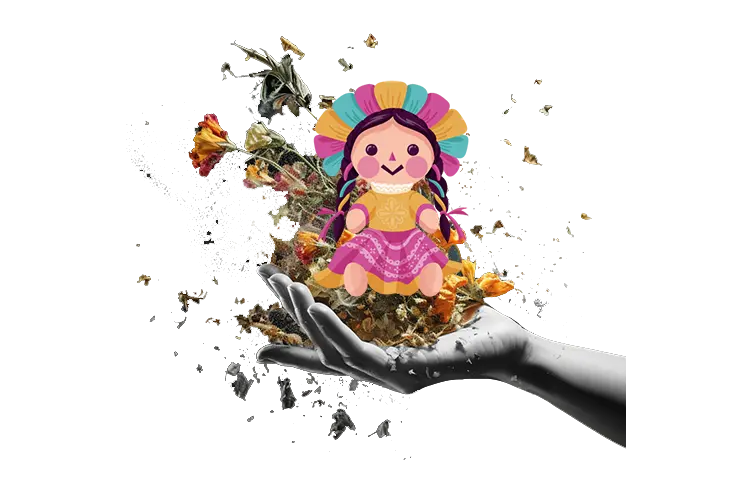
Peru’s vibrant, fun-loving culture is on full display during the country’s traditional wedding celebrations. Starting with engagement parties (known as pedidas) and finishing with crazy hours, here’s everything you need to know about wedding traditions in Peru.

The engagement party (la pedida) is the first major celebration of a Peruvian wedding. Historically, la pedida began with the groom asking the bride’s parents for permission to marry their daughter. After the engagement was finalized, the couple, their parents, and other close relatives gathered for dinner to announce the news.
Although the tradition of asking for permission has more or less died out, many couples still choose to host a lunch or dinner to announce their engagement to friends and family.
Selecting wedding attire is another important pre-wedding tradition in Peru. Couples living in large cities like Lima or Arequipa usually opt for Western-style garb, such as a white wedding dress and a dark-colored suit. Those living in rural areas tend to adhere to traditional clothing customs. These customs vary from region to region, but most incorporate colorful geometric patterns. Women wear multi-layered skirts, while men wear woven ponchos.

As in many countries, weddings in Peru typically consist of a civil ceremony and a religious ceremony. The civil ceremony takes place before the wedding day and is the only legally binding aspect of the event. It takes place at a municipal building in the municipality where the couple resides.
Following the civil ceremony, many couples host a religious wedding ceremony, often in a Catholic church (at least 70% of Peruvians identify as Catholic). Even if you’ve never attended a Peruvian wedding ceremony, many elements, like exchanging wedding rings and vows, will look familiar. That said, don’t expect to see a wedding party. Peruvian weddings are centered around the couple, their parents, and their grandparents only.
In addition to the traditional church customs, there are some unique Peruvian wedding traditions that take place during the ceremony.
One is a symbolic offering to Pachamama (Mother Earth), referred to as a despacho. A common custom in the Andes, a despacho is a chance to practice gratitude and bless new ventures.
According to tradition, the couple should spread a woven cloth on the ground and cover it with symbolic items like food, flowers, and confetti. Next, each guest places a few coca leaves on top of the other items, while blessing the couple. At the end of the ceremony, the cloth is wrapped and given to the bride and groom. They either burn it or bury it as a sacrifice to Mother Earth in hopes their wishes will come true.
Another, albeit less popular, tradition is the doll burial. Two small dolls resembling the bride and groom are wrapped in coca leaves and buried alongside a tree seed. The idea is that the couple’s love will grow as the tree does.

If there’s one thing Peruvians know how to do well, it’s party. Nowhere is that more clear than at a Peruvian wedding. The wedding reception includes plenty of food, an open bar, music, and sometimes professional dancers or entertainers.
And let’s not forget the wedding cake. Before the couple cuts into the mouthwatering dessert, they invite unmarried women to participate in a tradition known as the ring pull (cintas de la torta in Spanish). This Peruvian wedding tradition involves placing several ribbons either under the base of the cake or between two tiers. A ring is tied to one of the ribbons, although no one knows which one. The single women gather around the cake, each grasping a ribbon and pulling until it comes loose. Whoever gets the ring is said to be the next bride.
At some weddings, single ladies may get a second chance to vie for the title of next-to-be-wed by stealing the groom’s boutonniere. Whoever snags it should expect a proposal soon.

To the uninitiated, it may seem like the party is trailing off once the cake pull is over and everyone has eaten more than enough ceviche. But, the party is just getting started thanks to a Peruvian tradition known as the crazy hour (la hora loca). Essentially, the crazy hour is to wedding parties, what caffeine is to Monday mornings. It’s a chance to crank up the energy and jumpstart the party.
You’ll know it’s starting when the lights suddenly go out, the music blares, and someone hands you a glow stick. From there, expect all kinds of high-energy dancing and plenty more novelty items (toy jewelry, plastic crowns, and balloon animals, for example). Some weddings may even feature stilt walkers, professional dancers, and drummers.
Following the crazy hour, a wedding couple may offer a snack or a second meal to help guests refuel for several more hours of partying. Of all the events, the crazy hour is one Peruvian wedding experience you won’t want to miss.
Peruvian weddings last up to 10 hours or more, so get a good night’s sleep beforehand! This 10-hour estimate includes the ceremony, dinner, reception, and crazy hour. You can dip out early, but if you’re eager to keep the party going, you’ll be in good company.
Wedding costs are determined by location, number of guests, and level of service. Therefore, it’s difficult to give a concrete cost estimate for a wedding in Peru. For a small, low-end wedding, you could spend about $5,500, whereas a larger, more elaborate wedding could run about $20,000.
Peruvian couples shoulder about 55% of the wedding costs themselves. Many borrow money to cover their wedding costs. The couple’s parents and other family members may chip in to cover the remaining 45% of the budget.
Here at TheGroomClub, we give you all the tips, tricks, and budgeting information you need to plan the wedding of your dreams. In addition, we love highlighting fascinating wedding traditions from around the world. On the one hand, they allow us to travel without getting up from the couch. On the other, they’re a reminder that no matter how different weddings may look on the surface, they’re ultimately all about celebrating love and having fun.
To explore even more wedding traditions, head over to our wedding page!